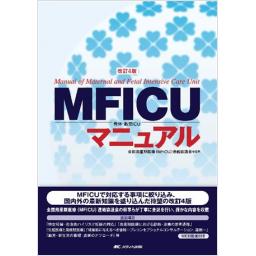1) Sebire NJ. et al. Early prediction of severe twin-to-twin transfusion syndrome. Hum Reprod. 15 (9), 2000, 2008-10.
2) Nakayama S. et al. Perinatal outcome of monochorionic diamniotic twin pregnancies managed from early gestation at a single center. J Obstet Gynaecol Res. 38 (4), 2012, 692-7.
3) Murata M. et al. Perinatal outcome and clinical features of monochorionic monoamniotic twin gestation. J Obstet Gynaecol Res. 39 (5), 2013, 922-5.
4) Quintero RA. et al. Selective photocoagulation of placental vessels in twin-twin transfusion syndrome : evolution of a surgical technique. Obstet Gynecol Surv. 53 (12 Suppl), 1998, S97-103.
5) Mari G. et al. Perinatal morbidity and mortality rates in severe twin-twin transfusion syndrome : results of the International Amnioreduction Registry. Am J Obstet Gynecol. 185 (3), 2001, 708-15.
6) Mahieu-Caputo D. et al. Paradoxic activation of the renin-angiotensin system in twin-twin transfusion syndrome : an explanation for cardiovascular disturbances in the recipient. Pediatr Res. 58 (4). 2005, 685-8.
7) Morikawa M. et al. Maternal weight gain in twin-twin transfusion syndrome. Acta Obstet Gynecol Scand. 90 (12), 2011, 1434-9.
8) Zosmer N. et al. Clinical and echographic features of in utero cardiac dysfunction in the recipient twin in twin-twin transfusion syndrome. Br Heart J. 72 (1), 1994, 74-9.
9) Murakoshi T. et al. Pulmonary stenosis in recipient twins in twin-to-twin transfusion syndrome : Report on 3 cases and review of literature. Croat Med J. 41 (3), 2000, 252-6.
10) Slaghekke F. et al. Twin anemia-polycythemia sequence : diagnostic criteria, classification, perinatal management and outcome. Fetal Diagn Ther. 27 (4), 2010, 181-90.
11) Hayashi S. et al. Outcome of monochorionic twin pregnancies with moderate amniotic fluid discordance adjoining twin-twin transfusion syndrome. Prenat Diagn. 36 (2), 2016, 170-6.
12) Quintero RA. et al. Staging of twin-twin transfusion syndrome. J Perinatol. 19 (8 Pt 1), 1999, 550-5.
13) Sago H. et al. The outcome and prognostic factors of twin-twin transfusion syndrome following fetoscopic laser surgery. Prenat Diagn. 30 (12-13), 2010, 1185-91.
14) Murakoshi T. et al. Validation of Quintero stage III sub-classification for twin-twin transfusion syndrome based on visibility of donor bladder : characteristic differences in pathophysiology and prognosis. Ultrasound Obstet Gynecol. 32 (6), 2008, 813-8.
15) Senat M-V. et al. Endoscopic laser surgery versus serial amnioreduction for severe twin-to-twin transfusion syndrome. N Engl J Med. 351 (2), 2004, 136-44.
16) Murakoshi T. et al. In vivo endoscopic assessment of arterioarterial anastomoses : insight into their hemodynamic function. J Matern Fetal Neonatal Med. 14 (4), 2003, 247-55.
17) Khalil A. et al. ISUOG Practice Guidelines : role of ultrasound in twin pregnancy. Ultrasound Obstet Gynecol. 47 (2), 2016, 247-63.
18) Nakayama S. et al. Perinatal complications of monochorionic diamniotic twin gestations with discordant crown-rump length determined at mid-first trimester. J Obstet Gynaecol Res. 40 (2), 2014, 418-23.
19) Lewi L. et al. The role of ultrasound examination in the first trimester and at 16 weeks' gestation to predict fetal complications in monochorionic diamniotic twin pregnancies. Am J Obstet Gynecol. 199 (5). 2008, 493 e1-7.
20) Sebire NJ. et al. Inter-twin membrane folding in monochorionic pregnancies. Ultrasound Obstet Gynecol. 11 (5), 1998, 324-7.
21) Yamamoto R. et al. The use of amniotic fluid discordance in the early second trimester to predict severe twin-twin transfusion syndrome. Fetal Diagn Ther. 34 (1), 2013, 8-12.
22) Sebire NJ. et al. Increased nuchal translucency thickness at 10-14 weeks of gestation as a predictor of severe twin-to-twin transfusion syndrome. Ultrasound Obstet Gynecol. 10 (2), 1997, 86-9.
23) Matias A. et al. Search for hemodynamic compromise at 11-14 weeks in monochorionic twin pregnancy : is abnormal flow in the ductus venosus predictive of twin-twin transfusion syndrome? J Matern Fetal Neonatal Med. 18 (2), 2005, 79-86.
24) Mabuchi A. et al. Clinical characteristics of monochorionic twins with a large hemoglobin level discordance at birth. Ultrasound Obstet Gynecol. 44 (3), 2014, 311-5.
25) Yokouchi T. et al. The incidence of spontaneous twin anemia-polycythemia sequence in monochorionic-diamniotic twin pregnancies : A single-center prospective study. J Obstet Gynaecol Res. 41 (6), 2015, 857-60.
26) Lopriore E. et al. Placental characteristics in monochorionic twins with and without twin anemia-polycythemia sequence. Obstet Gynecol. 112 (4), 2008, 753-8.
27) Tollenaar LSA. et al. Spontaneous twin anemia polycythemia sequence : Diagnosis, management and outcome in an international cohort of 249 cases. Am J Obstet Gynecol. 224 (2), 2021, 213.e1-213.e11.
28) Tollenaar LSA. et al. Treatment and outcome in 370 cases with spontaneous or post-laser twin anemia-polycythemia sequence managed in 17 different fetal therapy centers. Ultrasound Obstet Gynecol. 56 (3), 2020, 378-87.
29) Gratacos E. et al. A classification system for selective intrauterine growth restriction in monochorionic pregnancies according to umbilical artery Doppler flow in the smaller twin. Ultrasound Obstet Gynecol. 30 (1). 2007, 28-34.
30) Quintero RA. et al. Selective photocoagulation of communicating vessels in the treatment of monochorionic twins with selective growth retardation. Am J Obstet Gynecol. 185 (3), 2001, 689-96.
31) Gratacos E. et al. Prevalence of neurological damage in monochorionic twins with selective intrauterine growth restriction and intermittent absent or reversed end-diastolic umbilical artery flow. Ultrasound Obstet Gynecol. 24 (2), 2004, 159-63.
32) Gratacos E. et al. Incidence and characteristics of umbilical artery intermittent absent and/or reversed end-diastolic flow in complicated and uncomplicated monochorionic twin pregnancies. Ultrasound Obstet Gynecol. 23 (5), 2004, 456-60.
33) Ishii K. et al. Perinatal outcome of monochorionic twins with selective intrauterine growth restriction and different types of umbilical artery Doppler under expectant management. Fetal Diagn Ther. 26 (3), 2009, 157-61.
34) Ishii K. et al. Survival rate without brain abnormalities on postnatal ultrasonography among monochorionic twins after fetoscopic laser photocoagulation for selective intrauterine growth restriction with concomitant oligohydramnios. Fetal Diagn Ther. 45 (1), 2019, 21-7.
